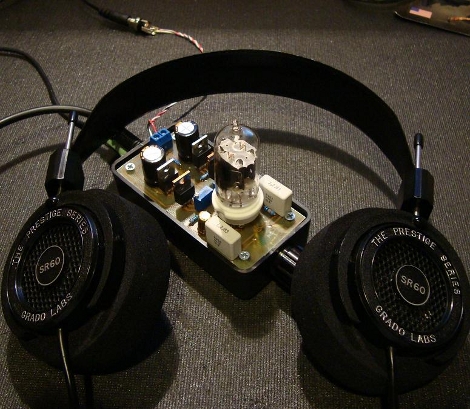
We like to check in from time to time on the scratch-built tube amp scene. [Rogers Gomez] recently posted his build of a headphone tube amp. This is somewhat related to his work from 2008, but this time around it’s simple enough to serve as an entry into amplifier construction for beginners. The PCB layout is clean and simple, makes for easy board etching, and it’s small enough to fit into an enclosure that can pass as a headphone accessory. Only one tube is needed, with a total parts bill coming in around the $50 mark. If you build it, heed his advice on testing with a pair of cheap headphones before you risk plugging in your prized pair.
Still want an amp but don’t care to source the vacuum tube? [Giovanni], who sent in the original tip, build one a while back and housed it in an external CD-ROM enclosure.
















I hope that sounds as nice as it looks. Beautiful work.
Great !!!! I want it ! :p
There were several attempts to make good tube amplifiers w/o output transformers, but they could drive only higher impedance headphones and they weren’t so perfect…
(Haven’t read the description on the link yet.)
OK, please delete my comments. It’s a hybrid and the signal goes from the right to the left. Sorry. :-)
Eek! An OP-AMP in a tube amp!
An LM317 is basically an OP-AMP + power stage with one input tied to a voltage reference.
That pretty much defeats THE reason for building tube amps: when you hate the way OP-AMPs ‘sound’
Nice headphones, I have them and they’re amazing – especially for the money.
The amp looks really clean too. I wonder what people would think of it with a case designed to show off the tube and the unit attached to a backpack strap or something.
that LM317 in there is just used as a CCS, it’s not in the signal path or anything. Why complain about that but not the MOSFET?
@anonymouse
1. The LM317 is fine as CCS for the filament(s) and other supply-side stuff
2. This CCS is _really_ IN the signal path, affecting the output voltage
3. There are better CCS circuits without OP-AMP ‘nasties’
4. The impedance of many audiophile headphones is way too low for OTL tube amps (at least, without getting into really exotic glassware)
5. MOSFETs are _much_ cheaper than a decent output transformer and still sound not that bad (at least better than op-amp based designs)
If you wanna talk about small tube amps… check out this:
http://www.myspace.com/subminitubeguitaramplifiers
Or search for “Firefly”
What’s wrong with op-amps?
I don’t know anything about all that “soundy goody” talk, but it’s pretty.
Nice project. Seriously.
WRT to the LM317 it is an adjustable regulator, not an opamp. Typically a non-inductive resistor is used in this role. The LM317 will objectively perform better, improve efficiency, create less heat and will cost the same or less than a 5W non-inductive resistor.
A discrete CCS may provide better performance than the LM317, but also may end up being more complicated than the amp itself.
For making this a safe, easy, low cost and accessible project the LM317 is an excellent choice.
Thanks to the good folks at HackaDay for posting the project.
Cheers,
Gio
Nice, but it’ll never sound any good without one of these:
http://www.youtube.com/watch?v=dyLEKViWbB4